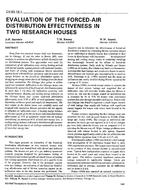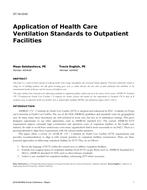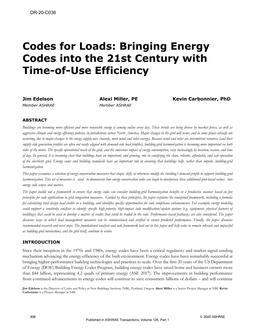Ventilation standards and guidelines typically treat ventilation as a constant and specify its value. In many circumstances, a designer wishes to use intermittent ventilation rather than constant ventilation, but there are no easy equivalencies available. This paper develops a model of efficacy that can determine how much intermittent ventilation is needed to get the same indoor air quality (IAQ) as the continuous value specified. This paper describes a simple relationship between three dimensionless quantities: the temporal ventilation effectiveness— which will be called the efficacy—the nominal turnover, and the underventilation fraction. This relationship allows the calculation of intermittent ventilation for a wide variety of parameters and conditions. The relationship can be used to define a critical time that separates the regime in which ventilation variations can be averaged from the regime in which variable ventilation is of low effectiveness. The paper shows that ventilation load-shifting, temporary protection against poor outdoor air quality, and dynamic ventilation strategies can be quite effective in low-density buildings such as single-family houses or office spaces. The results of this work enable ventilation standards and guidelines to allow this extra flexibility and still provide acceptable indoor air quality.
Units: Dual
Citation: ASHRAE Transactions, vol. 112, pt. 1
Product Details
- Published:
- 2006
- Number of Pages:
- 9
- File Size:
- 1 file , 530 KB
- Product Code(s):
- D-28002


